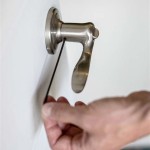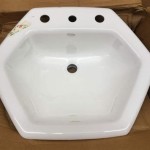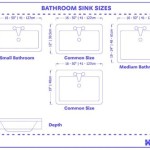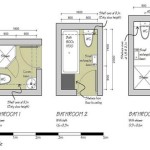Why Do Cats Always Want to Be In The Bathroom With You?
The seemingly unwavering feline fascination with bathrooms is a common observation among cat owners. While amusing and sometimes endearing, this behavior raises several questions about the underlying motivations. Several factors contribute to this tendency, ranging from environmental preferences to social bonding and even perceived resource competition.
The Allure of Cool Surfaces and Hydration
Temperature regulation plays a significant role in feline behavior. Cats, comfortable in slightly warmer environments than humans, often seek out cooler spots to relax, especially during warmer months. Bathrooms, particularly those with tile or linoleum flooring, offer respite from the general warmth of a house. The cool surfaces provide a comfortable place for a cat to lie down and regulate its body temperature.
Furthermore, bathrooms are often sources of fresh, running water. While providing cats with clean water bowls is essential, some cats are naturally drawn to the sound and movement of water from faucets or showerheads. The bathroom sink can become an enticing alternative to a stationary water source, offering a perceived freshness and novelty that attracts the cat.
The smooth, non-porous surfaces found in bathrooms are also easier for cats to groom themselves on. Shedding hair is easily visible and removed from these surfaces, unlike carpets or upholstered furniture where fur can become embedded. The bathroom therefore becomes a practical grooming area for a meticulous feline.
Security and Enclosed Spaces
Cats, by nature, are both predators and prey. This duality necessitates a constant awareness of their surroundings and a predisposition for secure environments. Bathrooms, often smaller and more enclosed than other rooms in the house, provide a sense of security for the cat. The limited entry points and contained space allow the cat to easily monitor its surroundings, minimizing potential threats and providing a safe haven.
The enclosed nature of the bathroom can also appeal to a cat's instinct for denning. In the wild, cats seek out small, secluded spaces to rest, raise their young, and feel protected. A bathroom, with its confined space and limited access, mimics this den-like environment, triggering a sense of security and comfort in the cat.
Furthermore, the bathroom often represents a consistent and predictable environment. The sound of the toilet flushing, the running water, and the presence of familiar objects can create a sense of stability and routine for the cat. This predictability can be particularly comforting for anxious or insecure cats.
Social Bonding and Attention Seeking
Despite their reputation for independence, cats are social animals that form strong bonds with their human companions. Following a human into the bathroom can be a manifestation of this bond, a way for the cat to spend time with its owner and reinforce the social connection.
The act of entering the bathroom with a human provides an opportunity for interaction and attention. Cats quickly learn that their presence in the bathroom often elicits a response from their owner, whether it's a pat on the head, a few words of endearment, or simply acknowledgment of their presence. This positive reinforcement encourages the cat to repeat the behavior.
In some cases, following a human into the bathroom can be a sign of separation anxiety. Cats that are particularly attached to their owners may become distressed when left alone, even for short periods. Following their owner into the bathroom is a way for the cat to maintain close proximity and alleviate their anxiety.
Resource Guarding and Territoriality
While seemingly counterintuitive, a cat's presence in the bathroom can relate to resource guarding and territoriality. Cats mark their territory through scent, leaving pheromones on objects to communicate their presence to other animals. The bathroom, used frequently by their human companions, becomes a prime location for scent marking.
The cat might view the bathroom as a resource-rich environment, not in terms of food or water, but in terms of attention and interaction. By being present in the bathroom, the cat is essentially guarding its access to its owner's affection and ensuring that it receives its share of attention. This is particularly true if the cat feels that its access to its owner is limited at other times.
The bathroom can also contain objects that the cat finds appealing, such as towels, bathmats, or even the toilet paper roll. These items may become objects of play or comfort for the cat, and its presence in the bathroom is simply a way to access these desired resources. This behavior is particularly prevalent in younger cats or those with a high play drive.
The act of scratching also plays a role in territorial marking. While scratching primarily serves to maintain claw health, it also leaves visual and scent markers that communicate ownership. The bathroom, with its various surfaces, may provide opportunities for scratching, further reinforcing the cat's territorial claims.
Medical and Behavioral Considerations
In some instances, a sudden or persistent change in a cat's bathroom habits can signal an underlying medical condition or behavioral issue. Increased frequency of urination, straining to urinate, or changes in stool consistency can indicate urinary tract infections, kidney disease, or other health problems. If a cat suddenly begins spending excessive time in the bathroom, a veterinary examination is warranted.
Behavioral issues, such as stress or anxiety, can also manifest as changes in bathroom habits. A cat experiencing stress may seek out the perceived security of the bathroom as a coping mechanism. Changes in the household environment, such as the introduction of a new pet or a move to a new home, can trigger anxiety and lead to increased bathroom visits.
Cats suffering from cognitive dysfunction syndrome (CDS), a condition similar to Alzheimer's disease in humans, may exhibit altered behavior patterns, including increased bathroom visits. These cats may become disoriented, forget where they are, or experience changes in their sleep-wake cycles, leading them to wander aimlessly and seek out familiar environments like the bathroom.
It is important to note that these are just some of the potential explanations for why cats consistently seek out the bathroom. The specific reasons can vary depending on the individual cat's personality, environment, and health status. Observing the cat's behavior in the bathroom, noting any accompanying symptoms, and consulting with a veterinarian or veterinary behaviorist can help determine the underlying cause and address any potential concerns.
Understanding the multifaceted reasons behind this common feline behavior allows owners to better cater to their cats' needs and strengthen the bond between them. By providing alternative cooling spots, ensuring access to fresh water, and creating a secure environment, owners can address some of the underlying motivations for bathroom visits and promote their cat's overall well-being.
:strip_icc()/cats-in-the-bathroom-554029-hero-3d3735d295614a38bad346da9edac558.jpg?strip=all)
7 Reasons Why Cats Love Bathrooms

Why Does My Cat Follow Me To The Bathroom Cats Com
:strip_icc()/cats-in-the-bathroom-554029-03-b030cec7a3a74ee994a4a18a8f386c6b.jpg?strip=all)
7 Reasons Why Cats Love Bathrooms

No Really Why Do Cats Follow You Into The Bathroom
Why Does My Cat Always Follow Me Into The Bathroom Quora

Why Does My Cat Follow Me Into The Bathroom

Why Does My Cat Guard Me When I Go To The Bathroom Cats Com

Why Do Cats Follow You To The Bathroom We Asked Scientists
:strip_icc()/cats-in-the-bathroom-554029-05-4afad09ad6c745bc8f291cd472f2f888.jpg?strip=all)
7 Reasons Why Cats Love Bathrooms

No Really Why Do Cats Follow You Into The Bathroom







